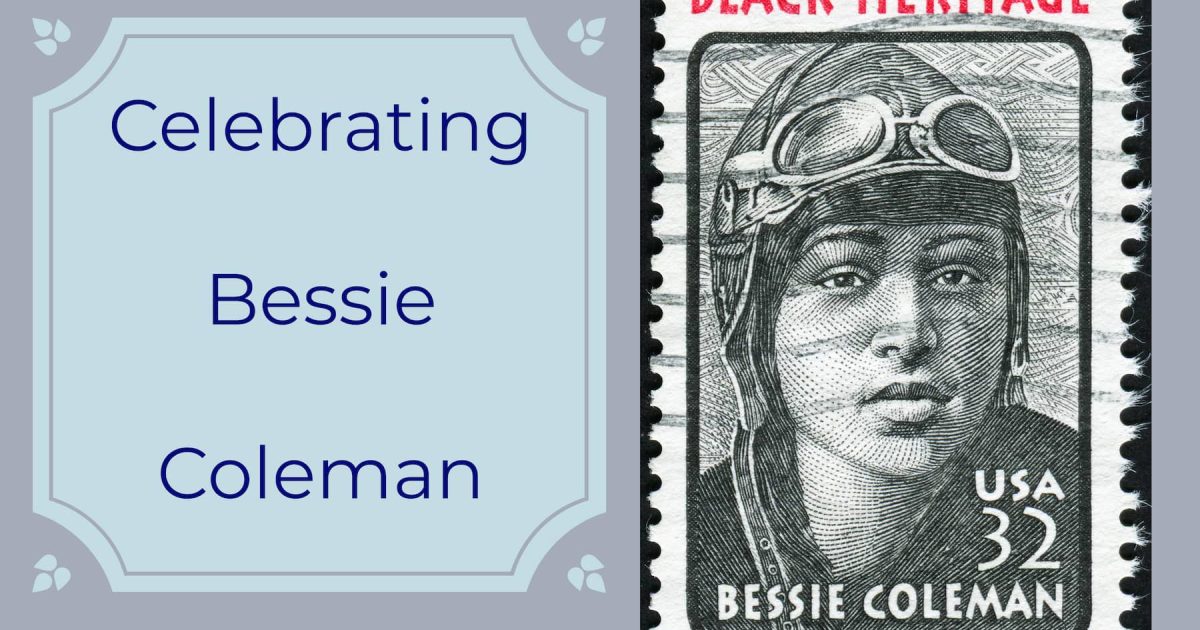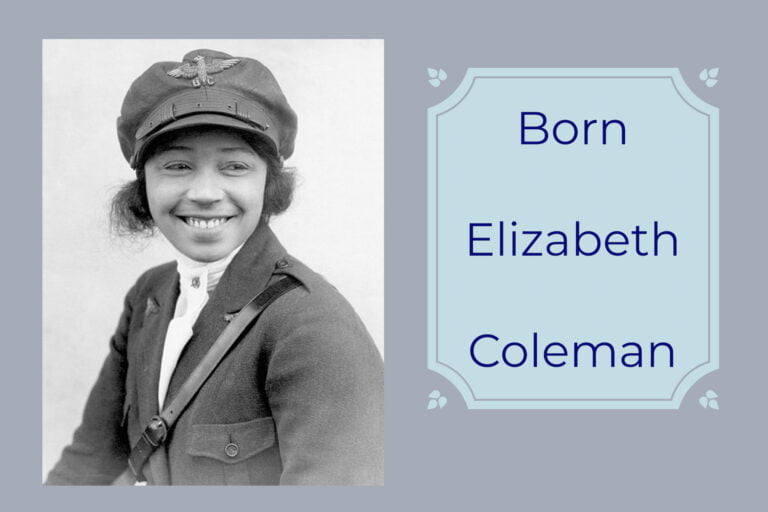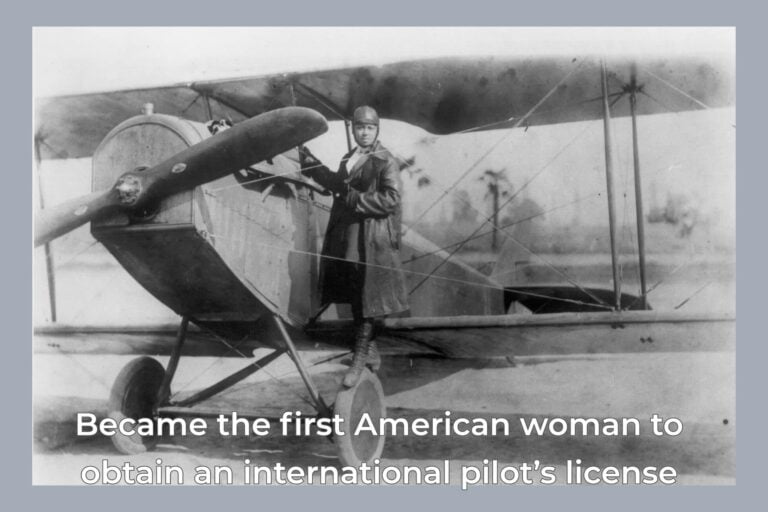
Disclosure: All products recommended in Living Up Blog have been selected by the founder and contributing authors. Some posts include...

Bessie Coleman, an early American civil aviator, achieved remarkable milestones in the early 20th century despite the daunting barriers of racial and gender discrimination. Her pioneering spirit, daring feats in the sky, and unwavering commitment to breaking down aviation’s racial divide have left an indelible mark on history.
Bessie Coleman was born Elizabeth Coleman on January 26, 1892, in Atlanta, Texas, to an African American mother and an African-Native American father. Needless to say, Bessie was a very smart woman and hard-working individual. Her mathematical aptitude freed her from working in the cotton fields where she was helping her mother in Texas, who chose to stay when her father suggested moving to Oklahoma to escape racial discrimination. After saving enough money to attend college, Bessie enrolled at the Colored Agricultural and Normal University (now Langston University) in Langston, Oklahoma.
According to Kerri Lee Alexander and Rebecca Ljungren, Bessie was inspired by her brothers who had gone to World War I, and on their return, they talked about how women in France were allowed to learn to fly airplanes. With high hopes, she applied to flying schools in the United States. After being rejected by all of them, “a famous African American newspaper publisher told her to move to France” (Alexander, n.d., as cited in Ljungren, 2024).

Stephanie Poole, Multimedia Journalist from WLOX News, said in a report about Bessie Coleman that “Gigi Coleman-Brooms, Bessie’s great-niece, told visitors the journey of Coleman’s arrival to Chicago. She also displayed certificates and awards following Coleman’s decision to start aviation training.” In the interview by Poole, Gigi Coleman-Brooms was quoted saying, “To highlight the impact she had in the aviation community and how she got these men, the black men to fly airplanes. They were afraid. If it wasn’t for Aunt Bessie, there wouldn’t be a Tuskegee Airmen. I’m so proud and honored she did what she did. If Bessie can do it, with all the things she had to go through with determination you can do whatever you want in life,” (Poole, 2024)
Bessie was accepted at the Caudron Brothers School of Aviation in Le Crotoy, France in 1920 at 28 years of age. On June 15, 1921, she became the first American woman to obtain an international pilot’s license from the Fédération Aéronautique Internationale. Coleman staged the first public flight by an African American woman in America on Labor Day, September 3, 1922. During a rehearsal for an aerial show, the plane carrying Coleman spun out of control, catapulting her 2,000 feet to her death. Bessie died April 30, 1926, Jacksonville, Florida.

We may often wonder how it is that we have so many rules, such as wearing seatbelts, driving under a certain speed limit, etc. Next time you wonder about any of those things. Know that someone in the past may have died for something that we take for granted today. In this case, Bessie’s unfortunate accident that killed her happened for a variety of reasons. Still, one of them could’ve been not wearing a seatbelt and perhaps a parachute on an airplane that did not have a roof. According to Alexander and Ljungren’s biography, after purchasing her own aircraft, she and her mechanic, Wills, took a test flight in which Wills was piloting the plane, and at “about 3,000 feet in the air, a loose wrench got stuck in the engine of the aircraft… the plane flipped over… Due to her un-fastened seatbelt, when the plane flipped over, Coleman fell out of the open plane.” (Alexander, n.d., as cited in Ljungren, 2024)
We must take many things from her story, for example, her determination and persistence in learning to do something against all obstacles that denied her that right. And unfortunately, her death must have moved lawmakers to start working on more safety laws for all. Bessie Coleman was a true entrepreneur who “gave speeches and showed films of her air tricks at churches, theaters, and schools” (Alexander, n.d., as cited in Ljungren, 2024) with the purpose of raising funds to open a school of aviation where women like her could learn to fly.
Let’s delve into her summarized accomplishments and how they continue to inspire generations:
Bessie Coleman’s legacy continues to inspire young African American girls today. Her courage, determination, and resilience are a powerful reminder that no dream is too big to achieve, regardless of the obstacles. She shattered ceilings and soared through the sky, leaving a trail for others to follow. Bessie Coleman’s story encourages young women to pursue their passions, break down barriers, and reach for the skies, literally and metaphorically.
Sources
Alexander, K.L., Ljungren, R. (nd). Bessie Coleman. National Women’s History Museum, biographies.
Britannica, T. Editors of Encyclopaedia (2024, January 30). Bessie Coleman. Encyclopedia Britannica.
Famous People. (n.d.). Bessie Coleman Biography. The Famous People, Profiles.
Image Bessie Coleman stamp. Encyclopædia Britannica.
Image 2. Bessie Coleman in 1923. Wikipedia, the free encyclopedia, wiki.
Image 3. Bessie Coleman. Michael Ochs Archives/Getty Images. (Johnson Lewis, 2018).
Johnson Lewis, J. (31 January 2018). Bessie Coleman, African American Woman Pilot. Thought Co., Humanities, History & Culture.
Poole, S. (22 February 2024). Black History Month: Bessie Coleman, the First Black Aviatrix. WLOX News.
The Historian. (15 December 2023). 10 Bessie Coleman Accomplishments and Achievements. Have Fun With History.
The official website of Bessie Coleman.
Wikipedia. (18 January 2024). Bessie Coleman. Wikipedia, the free encyclopedia, wiki.
Brainy Quotes. Bessie Coleman. https://www.brainyquote.com/authors/bessie-coleman-quotes

I decided blacks should not have to experience the difficulties I had faced, so I decided to open a flying school and teach other black women to fly.

Disclosure: All products recommended in Living Up Blog have been selected by the founder and contributing authors. Some posts include...

Disclosure: All products recommended in Living Up Blog have been selected by the founder and contributing authors. Some posts include...

Indian spices and culinary history dates back millennia, used both dried and fresh produce unique dishes, but it's hard to...

Diwali, the Festival of Lights, is a significant Hindu celebration symbolizing the triumph of light over darkness. Celebrated by Hindu...

Many of us love mushrooms and others just started noticing them. They gained the spotlight and surged in popularity, because...

Disclosure: All products recommended in Living Up Blog have been selected by the founder and contributing authors. Some posts include...

Disclosure: All products recommended in Living Up Blog have been selected by the founder and contributing authors. Some posts include...

Cooking with herbs and spices is the tool for chefs to create a symphony of flavors that dance on our...

Tzatziki is a creamy sauce that complements many Greek dishes, perfect for dipping, and for those with dietary concerns like...